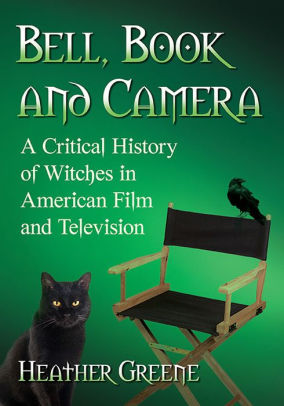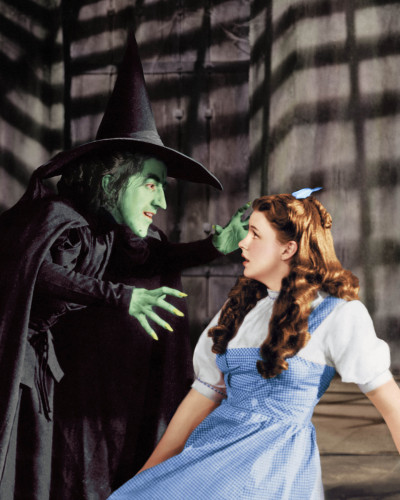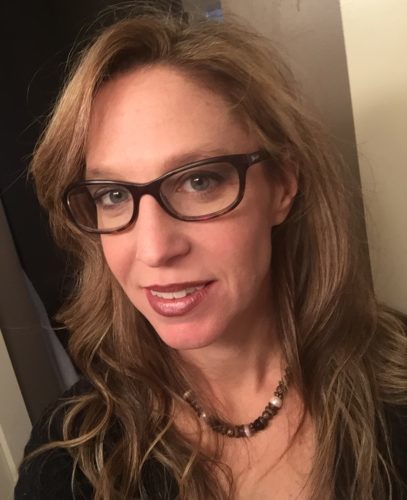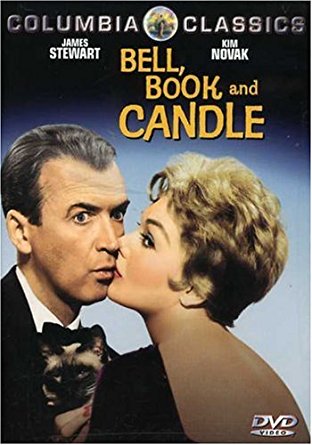ATLANTA — Almost four decades after the Wicked Witch of the West plagued Dorothy in The Wizard of Oz, the green-skinned, bushy-browed one lost her broom on, of all places, Sesame Street.
Actress Margaret Hamilton reprised her famous role in an episode of the children’s TV series that aired on Feb. 10, 1976, writes Heather Greene in her new book Bell, Book and Camera: a Critical History of Witches in American Film and Television (McFarland, April 2018, 234 p).
“With the exception of Big Bird and Oscar the Grouch, the inhabitants of Sesame Street are visibly frightened of Hamilton’s character,” Greene writes.
The Wicked Witch also scared the hades out of young viewers, just as she had done for decades since the release of Oz in 1939. Parents flooded the producers of Sesame Street with letters complaining that the episode was too scary for young children, and the “now infamous” segment “has not been released to the public in any form since that point,” Greene writes.

Such highways and byways of America’s cinematic fascination with the witch archetype fill Greene’s history, which covers the nascent years of Hollywood beginning in 1896 (the date of the first mass-audience viewing of a film) to the period she labels “A New Witch Order (2000-2016).”
Along the way, Greene delivers facts and critical insights on such popular, even iconic witch works as The Wizard of Oz, Snow White and the Seven Dwarfs, I Married a Witch, Carrie, The Craft, Bewitched (“The show subverts the 1950s family media model in which the father always ‘knew best,’ Greene writes), and Bell, Book and Candle (which Greene plays off for her title).
High culture — film versions of Shakespeare’s Macbeth and the Nathaniel Hawthorne short story “Feathertop” — is discussed alongside witch portrayals in such well-known pop culture fare as Betty Boop, Scooby-Doo, The Twilight Zone, The Simpsons, Charmed, Buffy the Vampire Slayer, Game of Thrones, and others.
Numerous lesser-known, even obscure works are examined, too: Satan’s Cheerleaders, Roger Corman’s The Undead (“the first notable horror film containing a true witch,” Greene writes), such “sexploitation” films as The Naked Witch, and more.
Greene is well-credentialed to write such a study. As a child growing up in the New York City metro area, she became a film fan while watching old movies, particularly old science fiction, with her art-director father. Her grandparents lived in Los Angeles and rubbed elbows with those in Hollywood, as her grandfather worked on movie sets as a carpenter.
Greene earned a bachelor’s degree in film studies and French from Wesleyan University, and an master’s in film studies from Emory University. She has also studied film and theater at Cornell University and the University of Paris. She began her professional career in commercial media, film production, and technology before leaving the corporate world to become an independent writer in 2001.
Additionally, she has been a practicing Witch and Pagan for more than 20 years. Currently living in Atlanta, she is the editor of The Wild Hunt and a member of Circle Sanctuary and the Covenant of the Goddess.
Bell, Book and Camera, Greene said in an interview with The Wild Hunt, “is not a Pagan spirituality book. It is a film history book.”
Her initial idea to write such a book came during her graduate film studies at Emory in Atlanta, around the time when the movie The Craft was at the forefront of a resurgence of witchy works in film and television.
Her life path led elsewhere until 2013, when she began writing about pop culture and film for The Wild Hunt, and her idea to write a history of witches in film and television was reborn.
“It just so happened there was a ton of witch stuff happening again,” Greene said. Two publishers said yes to her proposal and she chose McFarland. The book took four years to complete, during which she visited the Los Angeles archives of the Academy of Motion Picture Arts and Sciences. There she researched their vast reserves of academic papers, actual film production notes and other printed materials.

The Wizard of Oz (1939) [courtesy].
She also “had to determine ‘What is a witch film?’ Is it one that just mentions the word ‘witch’ once? A bunch of films use the word ‘witch’ in the title but they have nothing to do with witchcraft. There is no witch genre, like horror or comedy or whatever.”
Greene also found herself “defining the witch itself.” The result was different categories of witches reflecting “all these incarnations and changes” in the witch archetype, enabling her to “write about them in a way so that the reader will understand the process.”
Thus Bell, Book and Camera is populated by the vamp witch, the horror witch, the witch next door, the ghost witch, the Disney witch, the magical man, wild women horror vamps, warlocks and boy witches, the black witch, the male witch, the Victorian clown witch, the teen fantasy witch, and many more.
As it’s laid out in the introduction, “While it would seem that her construction is wholly driven by patriarchal concepts and a very specific religious bias, the story is far more intricate. The witch archetype is not only dependent upon traditional religious or political views stemming from a male-centered eye, but she is also dependent on shifting social contexts with regard to gender politics, sexuality, demographics of reception, and even modes of storytelling. The witch, as a narrative character construction within Western culture, is not as fixed in her meaning as one might first think . . . . The witch archetype exists in a type of liminal space, where she has been used and used again as both a tool of oppression and an inspiration for self-making.”
The result, Greene continues, is that “the Hollywood witch is telling not only her own story, but rather a larger one about American society.”

Heather Greene [courtesy].
One early inkling came in a 1975 episode of Mr. Rogers’ Neighborhood, in which Margaret Hamilton — yes, the Wicked Witch of the West again! — slowly dons her costume as Rogers speaks directly to the camera, and thus to his audience of children: “You know, witches are make-believe. They’re pretend.”
That episode, Greene writes, “sparked protests from the growing Witchcraft movement,” including Salem witch Laurie Cabot.
By the 1990s and following decade, respectful Witch and Wiccan characters and references were showing up in such television shows as The Simpsons, Boston Legal, Charmed and the movie Practical Magic. Pat Devin, a Dianic priestess and the public information officer of Covenant of the Goddess in Southern California, was a consultant on the film The Craft.
That Simpsons episode, titled “Rednecks and Broomsticks,” depicts Lisa encountering three young women practicing Wicca in the woods. The segment is “one of the most accurate depictions of modern Witchcraft practice on television,” Greene writes.
“The influence of the modern Pagan movement (on film and television) is significant, even if it’s not necessarily visibly significant,” Greene told The Wild Hunt. “‘Rednecks and Broomsticks’ is a good example of it being overt. They say the word Wicca. They obviously were trying to represent modern Witches, modern Wiccans, but the greater significance is our culture as a whole has become aware of the presence of Paganism as a religion.
“That becomes more and more apparent starting in the ’70s. You start to see that a witch is not just this fake character any more, this thing of fantasy, this satanic being. You start to see this consciousness of a modern movement, and it happens slowly and it really hits its stride come the ’90s. It becomes overt but at the same time it’s pushing the envelope underneath the surface. Even if it’s not saying ‘Well, there are modern practitioners and this is what we do,’ it’s saying witchcraft isn’t just something out of The Wizard of Oz.”
Fifteen notable witch works – good and bad
Greene viewed “99 percent” of the films and TV episodes she lists at the end of each chapter in Bell, Book and Camera, watching them on Netflix, DVD or, in the case of the 1991 film Black Magic Woman, finding a VHS cassette via eBay. She clearly denotes the ones she was unable to track down, which thus forced her in such cases “to use a different research method to get the information about those works,” she said.
“Most of them are very readily available,” Greene said. “My film professors would roll over if they heard me say I watched them on video.”
When The Wild Hunt asked Greene to select several films or TV shows that every Pagan, Witch or Wiccan should see, she cheerfully also offered to cite a few of the worst films she watched. The following is not a definitive list of her picks for best and worst – rather, these are works that first leapt to her mind.
- The Wizard of Oz: “It’s the most influential of all witch movies,” Greene said.
- Bell, Book and Candle: the 1958 film portrays “one of the most iconic American witches” and is an example of “the witch next door,” Greene writes.
- “Jess Belle” episode of The Twilight Zone: this episode “infuses a dramatic western-based narrative with elements of horror” as well as “theology, devil worship, psychosis, sexuality, and murder.”
- Sabrina the Teenage Witch: “I could do a whole book on Sabrina, on her evolution alone,” Greene said. In her book, she writes that Sabrina is “one of the most successful teen witch franchises in American culture, surviving from the early 1960s well into the millennium through multiple media formats.”
- The Craft, The Blair Witch Project: “These are vital in terms of influence across Hollywood structures.”
- The Witch, The Love Witch: “Both are excellent more recent films.”
- Pumpkinhead: “Everybody says, ‘What are you talking about, you like Pumpkinhead?’” Greene said. “The witch in Pumpkinhead is fantastic. I was dreading having to watch horror films because I’m not a horror film person at all, but I totally had fun after a while.”
- Witches Night: “If you like the campy ’70s horror films with witches in them, you have to see how they worked Witches Night, which is a more recent film, a throwback, a fantastic indie film.”
- Birth Rite, Manhater: “Oh man, Birth Rite was horrible, and Manhater — there are these mostly indie films that were made [at the turn of the century]. Some turned out to be more pornography than anything else, and I’m like, ‘Gaaccckkk, this is not what I’m looking at.’”
- Rosemary’s Baby, Blood Orgy of the She-Devil: “You watch a movie like Rosemary’s Baby — that’s a brilliant film — then you have to watch Blood Orgy of the She-Devil. You watch something like that and you’re like, ‘Really? Oh my, this is so bad it’s good.’”
- The Naked Witch: “It is one of the worst films, but it’s so good just because it’s so bad.”
Bell, Book and Camera is available through major book retailers, or direct from the publisher here.
[Correction: This article was originally incorrectly labeled a review. It is not a review, but an article about the book, including an interview with the author.]
The Wild Hunt is not responsible for links to external content.
To join a conversation on this post:
Visit our The Wild Hunt subreddit! Point your favorite browser to https://www.reddit.com/r/The_Wild_Hunt_News/, then click “JOIN”. Make sure to click the bell, too, to be notified of new articles posted to our subreddit.
